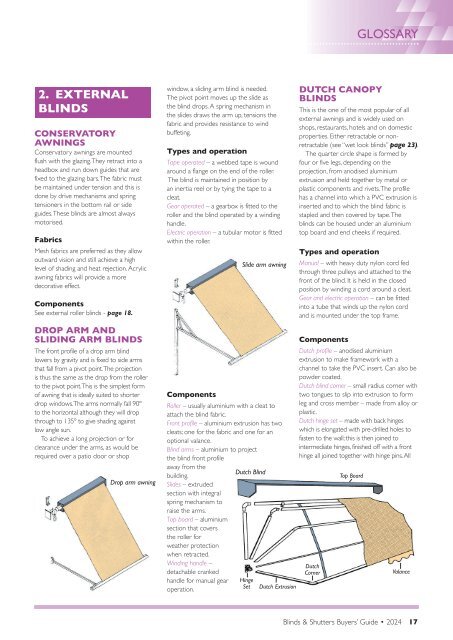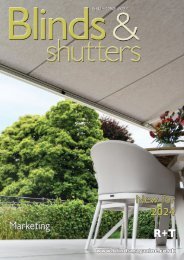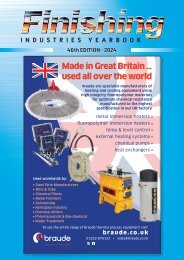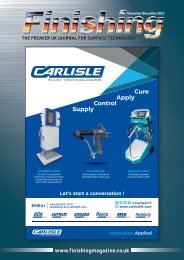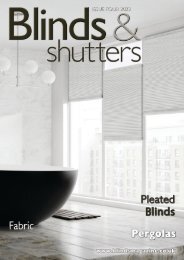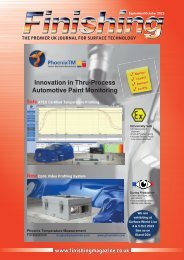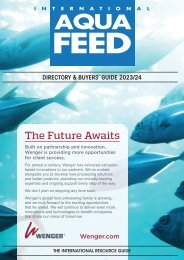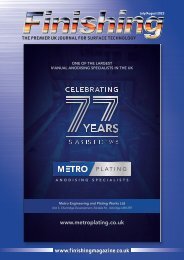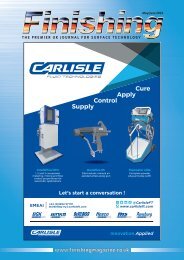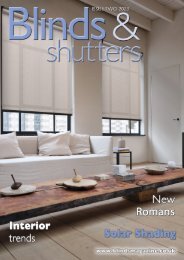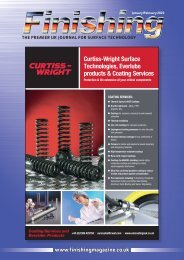Blinds & Shutters Buyers Guide 2024
Welcome to the Blinds & Shutters Buyers’ Guide 2024 the only UK directory for blinds, shutters, awnings and grilles. This is the essential guide for manufacturers, retailers and specifiers such as architects and designers, to source components and finished products. This edition of the Buyers’ Guide contains useful and practical information, such as the revised Glossary; a review of the Smart Buildings Show 2023; Features on new products and the BSI revised list for Relevant Standards. The A-Z Section and Buyers’ Guide Section provides information relating to 450 businesses and 50 different product types. Each year we review the categories in the Buyers’ Guide section. This year we have added Solar blinds in the INTERNAL section to make the guide more comprehensive: We hope that you find this year’s directory an invaluable aid to sourcing suppliers to provide the solution to your specific needs. The Blinds & Shutters team wish you all the very best for 2024!
Welcome to the Blinds & Shutters Buyers’ Guide 2024 the only UK directory for blinds, shutters, awnings and grilles.
This is the essential guide for manufacturers, retailers and specifiers such as architects and designers, to source components and finished products.
This edition of the Buyers’ Guide contains useful and practical information, such as the revised Glossary; a review of the Smart Buildings Show 2023; Features on new products and the BSI revised list for Relevant Standards.
The A-Z Section and Buyers’ Guide Section provides information relating to 450 businesses and 50 different product types.
Each year we review the categories in the Buyers’ Guide section. This year we have added Solar blinds in the INTERNAL section to make the guide more comprehensive:
We hope that you find this year’s directory an invaluable aid to sourcing suppliers to provide the solution to your specific needs.
The Blinds & Shutters team wish you all the very best for 2024!
You also want an ePaper? Increase the reach of your titles
YUMPU automatically turns print PDFs into web optimized ePapers that Google loves.
GLOSSARY<br />
2. EXTERNAL<br />
BLINDS<br />
CONSERVATORY<br />
AWNINGS<br />
Conservatory awnings are mounted<br />
flush with the glazing. They retract into a<br />
headbox and run down guides that are<br />
fixed to the glazing bars. The fabric must<br />
be maintained under tension and this is<br />
done by drive mechanisms and spring<br />
tensioners in the bottom rail or side<br />
guides. These blinds are almost always<br />
motorised.<br />
Fabrics<br />
Mesh fabrics are preferred as they allow<br />
outward vision and still achieve a high<br />
level of shading and heat rejection. Acrylic<br />
awning fabrics will provide a more<br />
decorative effect.<br />
Components<br />
See external roller blinds - page 18.<br />
DROP ARM AND<br />
SLIDING ARM BLINDS<br />
The front profile of a drop arm blind<br />
lowers by gravity and is fixed to side arms<br />
that fall from a pivot point. The projection<br />
is thus the same as the drop from the roller<br />
to the pivot point. This is the simplest form<br />
of awning that is ideally suited to shorter<br />
drop windows. The arms normally fall 90º<br />
to the horizontal although they will drop<br />
through to 135º to give shading against<br />
low angle sun.<br />
To achieve a long projection or for<br />
clearance under the arms, as would be<br />
required over a patio door or shop<br />
Drop arm awning<br />
window, a sliding arm blind is needed.<br />
The pivot point moves up the slide as<br />
the blind drops. A spring mechanism in<br />
the slides draws the arm up, tensions the<br />
fabric and provides resistance to wind<br />
buffeting.<br />
Types and operation<br />
Tape operated – a webbed tape is wound<br />
around a flange on the end of the roller.<br />
The blind is maintained in position by<br />
an inertia reel or by tying the tape to a<br />
cleat.<br />
Gear operated – a gearbox is fitted to the<br />
roller and the blind operated by a winding<br />
handle.<br />
Electric operation – a tubular motor is fitted<br />
within the roller.<br />
Components<br />
Roller – usually aluminium with a cleat to<br />
attach the blind fabric.<br />
Front profile – aluminium extrusion has two<br />
cleats; one for the fabric and one for an<br />
optional valance.<br />
Blind arms – aluminium to project<br />
the blind front profile<br />
away from the<br />
building.<br />
Slides – extruded<br />
section with integral<br />
spring mechanism to<br />
raise the arms.<br />
Top board – aluminium<br />
section that covers<br />
the roller for<br />
weather protection<br />
when retracted.<br />
Winding handle –<br />
detachable cranked<br />
handle for manual gear<br />
operation.<br />
Slide arm awning<br />
Dutch Blind<br />
Hinge<br />
Set<br />
Dutch Extrusion<br />
DUTCH CANOPY<br />
BLINDS<br />
This is the one of the most popular of all<br />
external awnings and is widely used on<br />
shops, restaurants, hotels and on domestic<br />
properties. Either retractable or nonretractable<br />
(see “wet look blinds” page 23).<br />
The quarter circle shape is formed by<br />
four or five legs, depending on the<br />
projection, from anodised aluminium<br />
extrusion and held together by metal or<br />
plastic components and rivets. The profile<br />
has a channel into which a PVC extrusion is<br />
inserted and to which the blind fabric is<br />
stapled and then covered by tape. The<br />
blinds can be housed under an aluminium<br />
top board and end cheeks if required.<br />
Types and operation<br />
Manual – with heavy duty nylon cord fed<br />
through three pulleys and attached to the<br />
front of the blind. It is held in the closed<br />
position by winding a cord around a cleat.<br />
Gear and electric operation – can be fitted<br />
into a tube that winds up the nylon cord<br />
and is mounted under the top frame.<br />
Components<br />
Dutch profile – anodised aluminium<br />
extrusion to make framework with a<br />
channel to take the PVC insert. Can also be<br />
powder coated.<br />
Dutch blind corner – small radius corner with<br />
two tongues to slip into extrusion to form<br />
leg and cross member – made from alloy or<br />
plastic.<br />
Dutch hinge set – made with back hinges<br />
which is elongated with pre-drilled holes to<br />
fasten to the wall; this is then joined to<br />
intermediate hinges, finished off with a front<br />
hinge all joined together with hinge pins. All<br />
Dutch<br />
Corner<br />
Top Board<br />
Valance<br />
<strong>Blinds</strong> & <strong>Shutters</strong> <strong>Buyers</strong>’ <strong>Guide</strong> • <strong>2024</strong> 17


